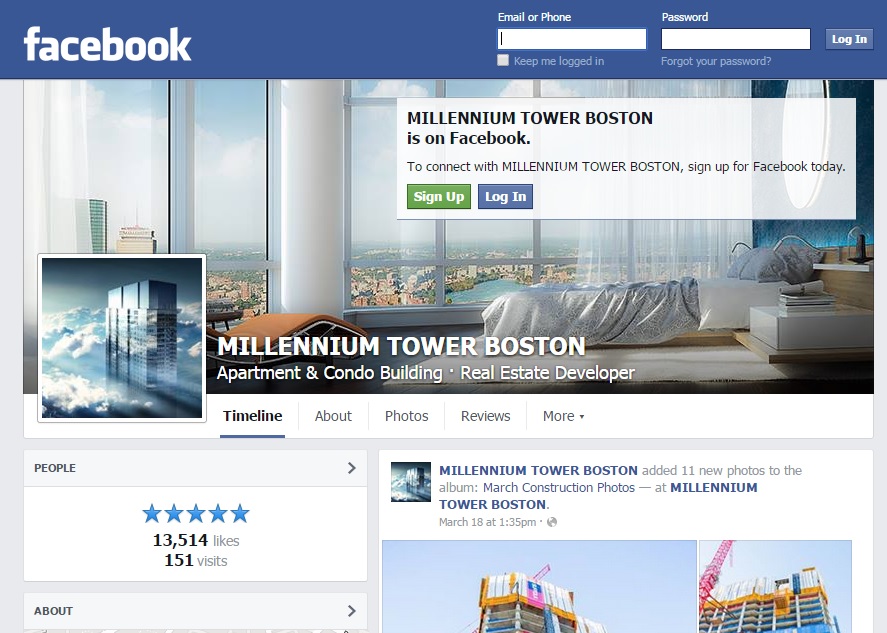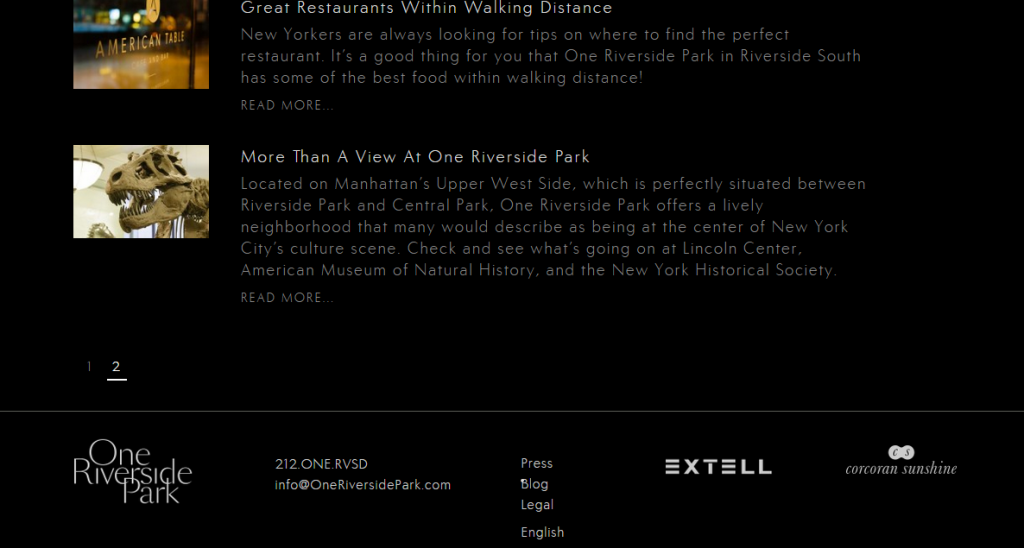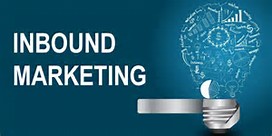
by Elizabeth Hines | Oct 18, 2018 | Blog, Content Marketing, Logistics, Marketing, Strategy, Supply Chain
The supply chain is increasingly seeing the value of moving to an inbound marketing strategy. Here’s what’s at the core of the change to inbound marketing.
Traditional marketing in the supply chain uses an outbound strategy. We’ve all done it. Taking out ads in trade publications. Sending direct mailings. Cold calling.
These types of approaches fight to get your brand name in front of prospective customers, hoping to get a marketing message that resonates in front of the right person at the right time.
Inbound marketing is different
Inbound marketing is different. It’s, well, confident. It showcases your industry merit rather than trying to convince people of it.
With inbound marketing, you publish relevant, informative content where your audience already is – your website, related social media, and other online industry channels – to add value at every stage of their buyer’s journey.
Prospective customers come to associate your brand with industry expertise. When they are ready to buy, they think of you. That’s an inbound content marketing strategy.
Why the supply chain is shifting to inbound content marketing
The supply chain is increasing seeing the value of moving to an inbound marketing strategy. What’s at the core of the change to inbound marketing?
On a theoretical level, it’s recognizing that your business has more to offer than its primary product or service. This is so very important. You also have a team of extremely knowledgeable industry experts with unique and informed perspectives.
But switching to an inbound content marketing strategy is also about recognizing that your customers want much more from you than just your product. The business to busienss (BtB) buying climate is growing longer and more complex, and customers today are demanding value outside the sales funnel. Traditional outbound marketing accomplishes neither of these.
[bctt tweet=”Switching to an inbound content marketing strategy is about recognizing that your customers want more from you than just your product. Customers today are demanding value outside the sales funnel. ” username=”Fronetics”]
Why inbound marketing is better for the supply chain
If that didn’t convince you, put simply, inbound content marketing is just more effective for four main reasons:
- Cost. Inbound marketing is typically less expensive than outbound. Hubspot reports that each sales lead costs approximately 61% less for organizations that employ an inbound strategy versus those that focus on outbound marketing.
- Measurability. Measuring your success with inbound marketing is considerably easier. For example, you’ll never know how many people saw your billboard, but you can measure exactly how many people read your blog post.
- Longevity. Digital content is often evergreen – meaning it’s forever relevant – and older posts that need an update can be easily optimized. Essentially, content lives forever and continues drive traffic long after you publish it. In fact, at Fronetics, about 80% of our traffic comes from posts that are 6 months old or older.
- Targetability. With inbound marketing, you only expend resources on prospects that are already looking for information about your industry, products, and services, making inbound marketing a much more targeted approach for your lead-nurturing efforts. Less expensive, easier to measure, lasts longer, and represents a more targeted approach? Seems like a no-brainer. But what’s the catch? Well, executing a good inbound content marketing isn’t easy, and it generally takes at least six months to yield results.
Executing a good inbound content marketing strategy
Done well, inbound content marketing is extremely effective. A good content marketing strategy is about understanding the questions and concerns that are particular to your customer base and about offering quality information and analysis that answers those needs.
The role of content in the supply chain and logistics industries is to grow brand awareness and customer engagement, increase lead generation and nurturing, and establish your company as an industry thought leader in the minds of your prospective customers.
An inbound marketing strategy helps you become more than just another business to customers. You can become a valuable resource for everything related to your products, services, and industry as a whole. Which is precisely what your potential customers are currently expecting from your supply chain and logistics business.
This post originally appeared on EBN Online.
Related posts:


by Fronetics | Jun 26, 2018 | Blog, Content Marketing, Logistics, Marketing, Strategy, Supply Chain
More and more supply chain marketers are realizing the benefits of inbound marketing (over outbound marketing) including cost savings and increased lead generation.
Marketers are constantly coming up with new and trendy ways to attract leads. With endless platforms available to us, it can be overwhelming for even the most seasoned marketers to know where they need to focus their efforts.
In order to find the right solutions for your supply chain marketing needs, you first have to understand the difference between inbound and outbound marketing. And more importantly, how they can help — or hinder — your marketing efforts.
Outbound marketing
Outbound marketing describes any marketing approach that pushes a message onto a buyer. Traditional marketing — tv and radio ads, telemarketing, banner and display ads — are all examples of outbound marketing.
Another name for this marketing tactic is interruption marketing, as it typically tries to take “attention away from what your buyer is doing and bring it, forcibly, on to your product or service.”
Inbound marketing
Inbound marketing focuses on audiences finding you. Instead of pushing a message onto buyers, inbound marketing allows you to establish your brand as an industry leader and let interested audiences come to you. This type of marketing attempts to draw in potential customers through interesting and engaging content.
Content marketing is a type of inbound marketing. Examples include blog posts, social media, infographics, white papers, and videos.
Why is inbound marketing better for the supply chain?
Outbound marketing used to be the ‘go to’ for generating leads, but this is simply no longer the case. Marketers across industries have found that inbound marketing has many advantages over traditional marketing practices. In fact, almost three-quarters (68%) of inbound organizations believe their marketing strategy is effective, while more than half (52%) of outbound marketers don’t believe their strategy is effective.
[bctt tweet=”Marketers across industries have found that inbound marketing has many advantages over traditional marketing practices. In fact, almost three-quarters (68%) of inbound organizations believe their marketing strategy is effective.” username=”Fronetics”]
Here’s why we think inbound marketing is better for supply chain marketers than outbound marketing.
Video: Why supply chain marketers need inbound marketing
Related posts:


by Fronetics | Jun 29, 2015 | Blog, Content Marketing, Marketing

In real estate sales, you want people to find your properties, like what they see, and ultimately be moved to purchase. In other words, you want to attract visitors, convert visitors to leads, and convert leads to deals. Innovative luxury real estate firms are finding ways to leverage digital tools to guide more buyers down that path to purchase.
Without a doubt, luxury real estate buyers are a diverse bunch. “One day I have to know all about feng shui, and the next I have to be able to talk to a pig farmer from Iowa,” says one luxury real estate sales executive. “I’m like a chameleon.” And luxury buyers are trending even more heterogeneous – both geographically and demographically. What’s more, they are more connected than ever before due to the proliferation of digital technologies that enable buyers and properties to connect with one another in new and different ways. It’s clear that technology is a strategic way for properties to get in front of more potential buyers; moreover, it creates competitive opportunities for luxury real estate firms that are prepared to adapt to this new landscape.
Many luxury real estate firms are already using digital and social media to carry the lifestyle brand they’ve built around their properties into the online world. With the use of inbound marketing – think of it as the intersection of valuable content, social media, and lead generation – they are creating new virtual “touch points” to connect with affluent, hyper-connected luxury buyers.
What we know about luxury buyers is that they are likely to do purchasing research online; they are influenced by peers and their interactions with websites, mobile apps, and social networks. We also know that 93 percent of all online experiences begin with a search engine, and that 75 percent of searchers don’t move past the first page of search results. Through publishing relevant, quality content, inbound marketing gives luxury real estate marketers the tools needed to make certain their properties are being found online.
According to Sprout Social’s Consumer Engagement Index, which ranks industries by which ones receive the most engagement from customers on social media, the real estate industry is second overall in terms of inbound engagement relative to audience size. But how exactly, are real estate firms using inbound marketing to sell luxury properties? The majority of real estate firms, through the use of social media and blogs, are seeking to draw visitors to a property’s website. Others are putting social media to use for functional purposes such as communicating real-time updates to potential buyers about project timelines or changes in sales office hours.
Of their recent inbound marketing efforts, the New York City-based Corcoran Real Estate Group says they have realized significant benefits. A spokesperson for the company says, “The main thing we’ve seen is that the quality of the referral traffic back into our main website has significantly improved. And not only are we seeing more traffic coming in, but visitors coming in from social media sites are staying longer and looking at more things — something we had also seen with search engines, but not in such large numbers.”
Corcoran isn’t alone in their use of emergent technology and social media strategy to ensure maximum exposure for their luxury properties. Long & Foster’s Luxury Homes e-magazine showcases luxury properties through an extensive online campaign targeting luxury clients. The online campaign drives traffic to the e-book and the website. Similarly, residential homebuilder Polygon Homes currently connects their available luxury properties to over 6,000 people through a multitude of social media platforms. The company’s social followers are linked to relevant articles, outside press coverage, and traditional marketing resources that serve to build on the lifestyle brand of each property.
Real estate firms are also recognizing value in blog content as way to attract visitors and nurture leads. For example, One Riverside Park, a newly-constructed New York City building with luxury condo units for sale, uses their blog to highlight not only their property, but also additional relevant information such as neighborhood amenities, seasonal local weather, and area restaurants.

Boston is experiencing a substantial upsurge in construction of high-end luxury residential units. The Boston Globe reports that “more than 8,000 luxury residential units are expected to be built in Boston during the next three years, doubling the supply of units built in large, luxury complexes since 1960.” And local real estate firms are using inbound marketing to sell those luxury units. Seventy percent of the luxury units at the 60-story Millennium Tower under construction in Boston’s Downtown Crossing neighborhood have been sold. Millennium Partners, the firm responsible for the marketing and sales of the luxury units, has embraced inbound marketing as part of their overall marketing strategy. The firm currently has over 13,500 likes from users on social media. Millennium Tower’s Facebook page not only shares construction progress, sales information, and related press coverage, but neighborhood amenities, industry trends, and an array of visual content that’s more often than not shared widely by followers.

Beyond increased prospect engagement and driving more traffic to their websites, other firms are using inbound marketing as a way to gauge market reception of traditional print marketing materials and the general perception of properties; knowing what resonates online through focus group-like participation is valuable information that marketers are finding bolster their offline marketing efforts. In that same vein, while real estate marketers are realizing value from creating and sharing content, they’re also recognizing the importance of analytics and measurement.
Real estate marketers are using inbound marketing metrics to determine what type of content is inspiring current customers and pulling in new leads. These firms are looking at how their online numbers compare daily, weekly, and monthly and planning content accordingly. Specifically, they’re monitoring measurements like page views, video views, document views, content downloads, and social conversations. They’re examining how sales are impacted by social media and digital content by tracking metrics such as referrals from Facebook, Twitter, Pinterest. Knowing all of these metrics allows for a more nimble real estate marketing strategy– one that’s able to rapidly adapt and engage potential buyers in real-time.
Inbound marketing is a new approach to an old strategy – one that’s putting real estate marketers in charge of the way potential buyers interact with their properties. These marketers are guiding prospects down the road of purchase through lead generation campaigns – capturing emails and other contact information through blog subscriptions and form completions for content downloads. They’re strengthening branding efforts for their properties by building robust online social communities and employing previously untapped sources of referrals. Real estate marketers who use inbound marketing are seeing their properties rank higher in search engine results pages, experiencing a steady increase in their website visitors, and increasing conversion rates of leads and sales. Taking into consideration the changing demographics and increased digital connectedness of luxury real estate buyers, firms that seek to broaden the reach of their marketing efforts through new and emergent technologies will aggressively position themselves as strong competitors in an increasingly competitive luxury property market.


by Fronetics | Feb 5, 2015 | Blog, Logistics, Strategy, Supply Chain

Think inbound marketing isn’t for the supply chain and logistics industries? Guess again. Here are 5 reasons companies in the supply chain and logistics industries need inbound marketing.
Companies within the supply chain and logistics industries tend to disregard inbound marketing. The reason being they do not think inbound marketing will prove successful. The common objection is that prospects and customers for these industries are not online.
The reality, however, is that inbound marketing can be wildly successful for companies within the supply chain and logistics industries.
Here are five reasons why companies in these industries should use inbound marketing:
1. Customers are online.
B2B buyers are online. 93% of B2B buyers report that they use search engines to research purchase decisions. These buyers go online for a number of reasons including to:
- Learn about new market developments and industry practices;
- Discover new solutions to address a specific problem;
- Address a project or a program being undertaken by their company.
2. 60% of the sales process takes place before they engage your sales rep.
The average customer progresses nearly 60% of the way through the purchase decision-making process before engaging with a sales rep.
Before engaging with a sales rep, customers are turning to the internet and to social media for information. The 2014 UPS B2B Buyers Insight Study found that 68% percent of buyers research supply purchases via supplier website, and 52% use search engines.
3. You can present solutions to your prospects’ problems via social media and content.
When prospects go online they are looking for information and for answers. By creating valuable content and leveraging social media you can attract and engage prospects, and convert these prospects to customers.
4. Inbound marketing is more effective than traditional marketing.
Research conducted by HubSpot found that inbound marketing is more effective than outbound marketing:
- 200% average ROI;
- 62% lower cost head;
- 15% increase in top line revenue.
5. The proof is in the pudding.
Freight logistics company Cerasis decided to make the switch from outbound marketing to inbound marketing. Within 25 months the company gained 98 new customers and increased revenue by 14%.
Fronetics Strategic Advisors is a management consulting firm with a focus on inbound marketing. We create and execute successful strategies for growth and value creation. Unlike other firms, our approach is data driven. We know ROI is important, so we track and measure results to drive success. Read about our approach to inbound marketing, or get in touch.


by Fronetics | Feb 5, 2015 | Blog, Logistics, Strategy, Supply Chain

Think inbound marketing isn’t for the supply chain and logistics industries? Guess again. Here are 5 reasons companies in the supply chain and logistics industries need inbound marketing.
Companies within the supply chain and logistics industries tend to disregard inbound marketing. The reason being they do not think inbound marketing will prove successful. The common objection is that prospects and customers for these industries are not online.
The reality, however, is that inbound marketing can be wildly successful for companies within the supply chain and logistics industries.
Here are five reasons why companies in these industries should use inbound marketing:
1. Customers are online.
B2B buyers are online. 93% of B2B buyers report that they use search engines to research purchase decisions. These buyers go online for a number of reasons including to:
- Learn about new market developments and industry practices;
- Discover new solutions to address a specific problem;
- Address a project or a program being undertaken by their company.
2. 60% of the sales process takes place before they engage your sales rep.
The average customer progresses nearly 60% of the way through the purchase decision-making process before engaging with a sales rep.
Before engaging with a sales rep, customers are turning to the internet and to social media for information. The 2014 UPS B2B Buyers Insight Study found that 68% percent of buyers research supply purchases via supplier website, and 52% use search engines.
3. You can present solutions to your prospects’ problems via social media and content.
When prospects go online they are looking for information and for answers. By creating valuable content and leveraging social media you can attract and engage prospects, and convert these prospects to customers.
4. Inbound marketing is more effective than traditional marketing.
Research conducted by HubSpot found that inbound marketing is more effective than outbound marketing:
- 200% average ROI;
- 62% lower cost head;
- 15% increase in top line revenue.
5. The proof is in the pudding.
Freight logistics company Cerasis decided to make the switch from outbound marketing to inbound marketing. Within 25 months the company gained 98 new customers and increased revenue by 14%.
Fronetics Strategic Advisors is a management consulting firm with a focus on inbound marketing. We create and execute successful strategies for growth and value creation. Unlike other firms, our approach is data driven. We know ROI is important, so we track and measure results to drive success. Read about our approach to inbound marketing, or get in touch.












